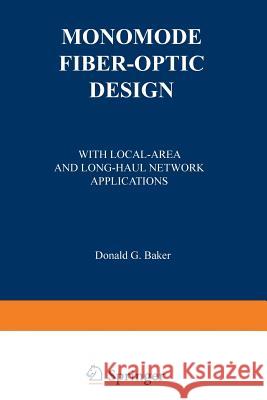Monomode Fiber-Optic Design: With Local-Area and Long-Haul Network Applications » książka
Monomode Fiber-Optic Design: With Local-Area and Long-Haul Network Applications
ISBN-13: 9789401170024 / Angielski / Miękka / 2012 / 490 str.
Fiber optics is a transmission technique that uses electrical signals to modulate a light source and thereby produce an optical signal proportional to the electrical signal. These optical signals contain information that is transmitted via a glass waveguide to a light-sensitive receiver. Fiber optics has a distinct advantage over copper networks for some applications. The objective of this book is to explore monomode, as opposed to multimode, applications of fiber optics to local area networks (LANs), which have become a rather important aspect of this technology because of the ever-increasing growth of LANs. Monomode fiber optics requires the use of coherent light sources such as laser diodes, YAGs, and HeNe lasers, to name just a few. It has some distinct advantages over multimode that this text will investigate in a cursory manner. (The author's previous book on multimode fiber optics, Fiber Optic Design and Applications, published by Reston, would be helpful but not necessary to aug- ment this text.) Monomode (or single-mode) fiber optics is the present direction of the state- of-the-art because of its superior performance. Since a few problems existed that limited the growth of monomode technology at the time this book was being written, several sections of the text will be devoted to examining the shortcom- ings as well as the performance advantages of this technology.











